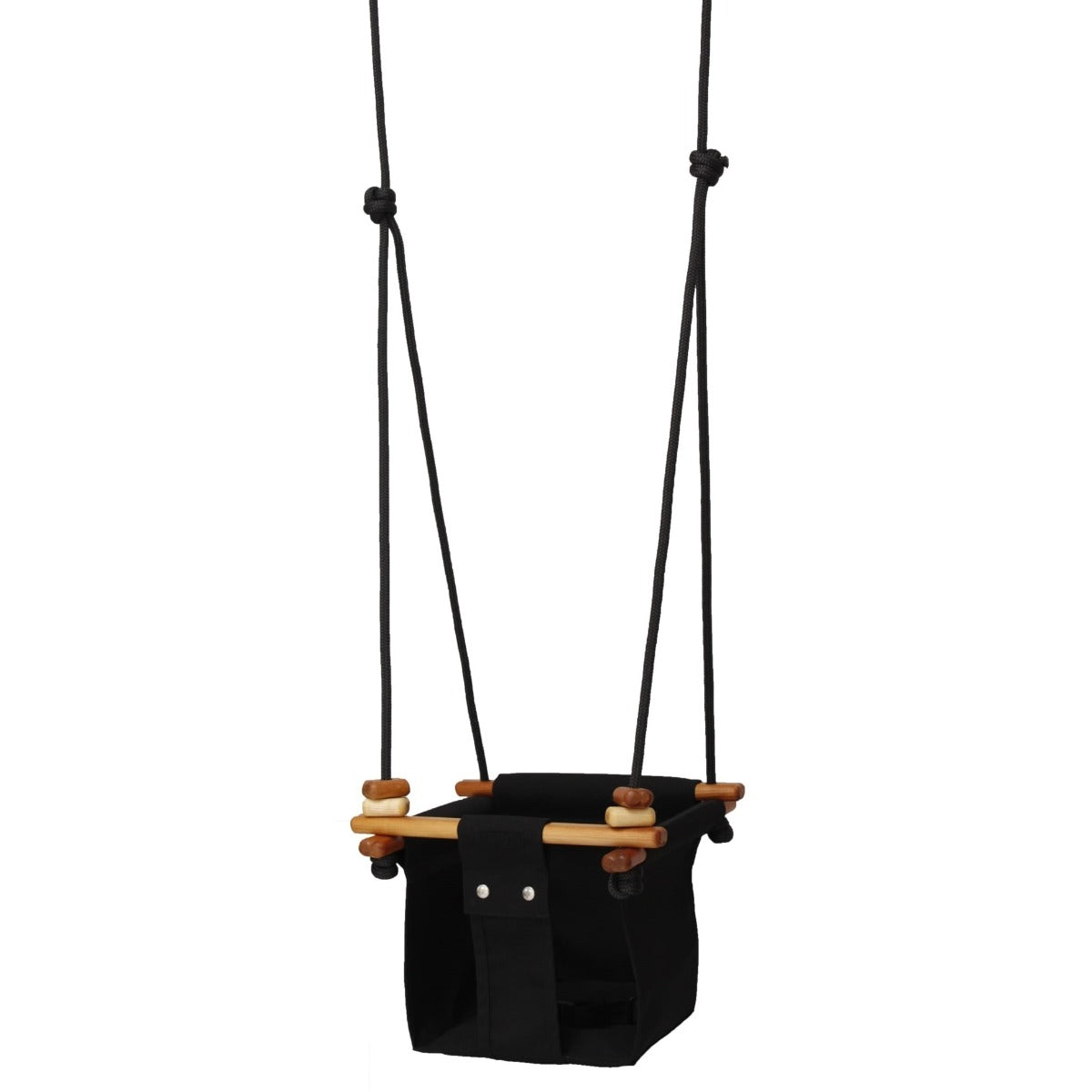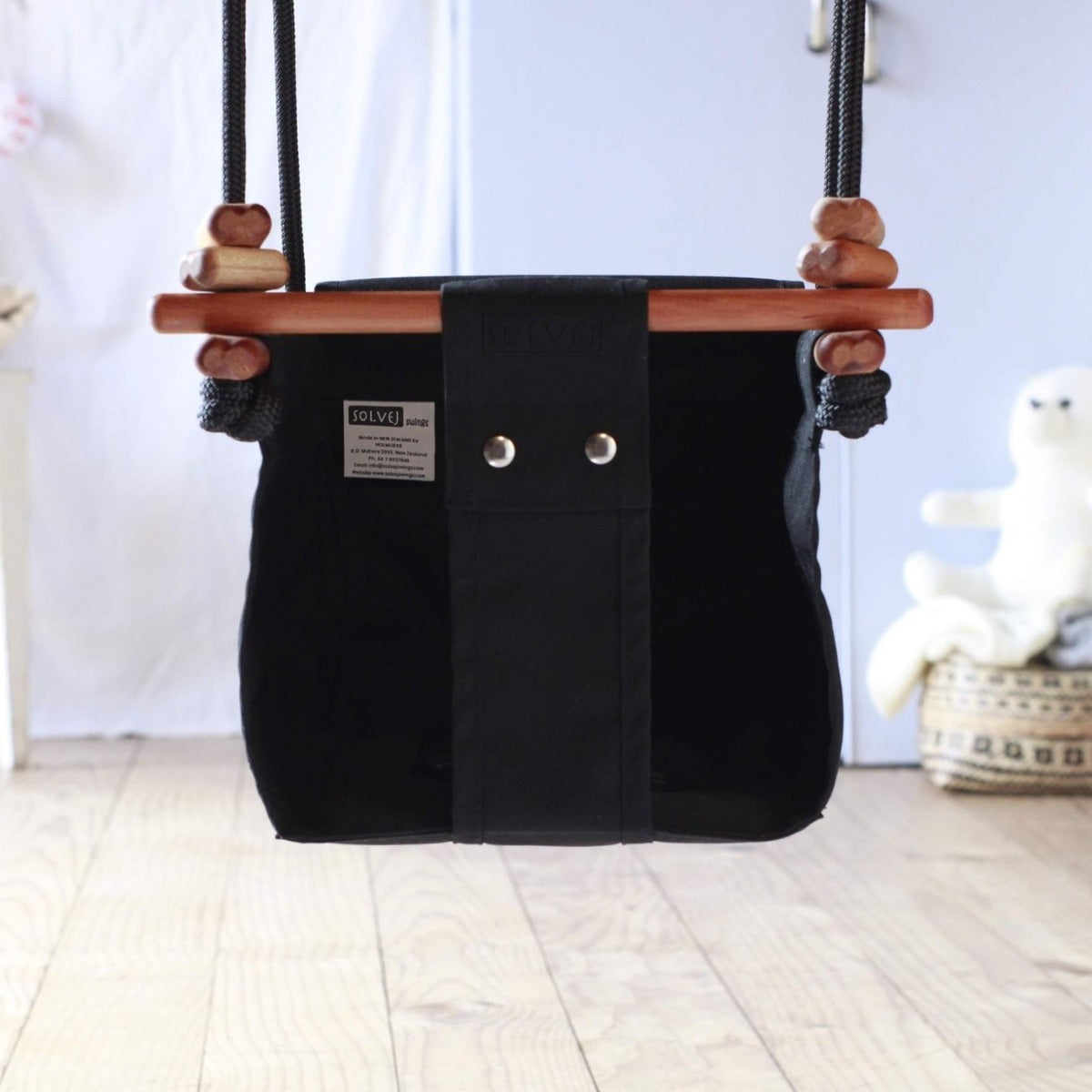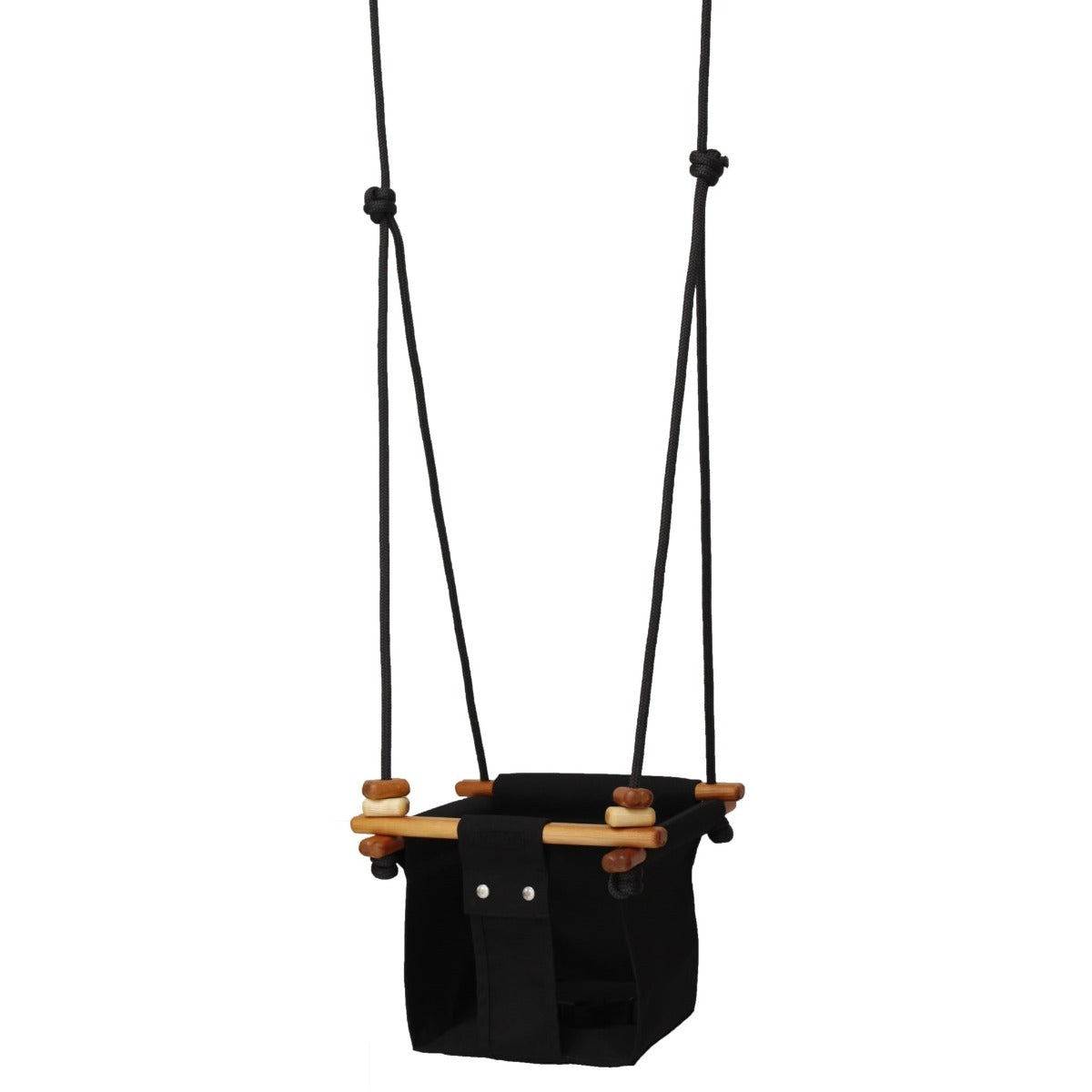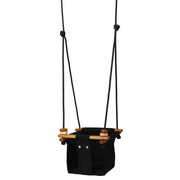SOLVEJ Baby Toddler Swing
SOLVEJ Baby Toddler Swing
SKU:CBBNZR
Clothing Prem to 18 Months
| Size | Age Guide | Weight | Height |
|---|---|---|---|
| Premature | Premature or Small Newborn | Up to 4Kg | Up to 55cm |
| Newborn | 0-3 months | 4-6Kg | Up to 62cm |
| 3 Month | 3-6 months | 6-8Kg | Up to 68cm |
| 6 Month | 6-12 Month | 8-10Kg | Up to 76cm |
| 12 Month | 12-18 Month | 10-12Kg | Up to 84cm |
| 18 Month | 18-24 Month | 12-14Kg | Up to 92cm |
Clothing 2 to 6 Years
| Size | Age Guide | Height | Chest | Waist | Hip |
|---|---|---|---|---|---|
| 2 Year | 2-3 Years | Up to 100 cm | 56 | 51 | 58 |
| 3 Year | 3-4 Years | Up to 105 cm | 58 | 53 | 60 |
| 4 Year | 4-5 Years | Up to 110 cm | 60 | 55 | 62 |
| 5 Year | 5-6 Years | Up to 115 cm | 62 | 57 | 64 |
| 6 Year | 6-7 Years | Up to 120 cm | 64 | 59 | 66 |
Beanie Size Guide
| Size | Head Circumference | Age Guide |
|---|---|---|
| Premature | 31-35 cm | Premature or Small Newborn |
| Newborn | 35-40 cm | Newborn |
| Small | 40-43 cm | 3-6 Months |
| Medium | 43-47 cm | 6-18 Months |
| Large | 47-52 cm | 18-3 Years |
Sunhat Size Guide
| Size | Head Circumference | Age Guide |
|---|---|---|
| Newborn | 37-40 cm | Newborn |
| Small | 40-43 cm | 3-6 Months |
| Medium | 43-46 cm | 6-12 Months |
| Large | 46-49 cm | 12-24 Months |
| Xtra Large | 49-54 cm | 2-4 Years |
Sleep Pods Size Guide
| Size | Weight | Age Guide | Measurement(Back to Hem) |
|---|---|---|---|
| Newborn | 0-6 kgs | 0-3 Months | 60.5 cm |
| Small | 0-8 kgs | 3-6 Months | 66 cm |
Booties Size Guide
| Size | Age Guide |
|---|---|
| Newborn | 0-3 Months |
| Small | 3-6 Months |
| Medium | 6-12 Months |
| Large | 12-18 Months |
Pretty Brave Baby
| Foot Length (mm) | Insole Length (mm) | EU | UK | Age | INT |
|---|---|---|---|---|---|
| 95-104 | 110 | 16/17 | 2 | 0-6m | S |
| 104-114 | 118 | 18 | 3 | 6-12m | M |
| 114-123 | 127 | 19/20 | 4.5 | 12-18m | L |
| 123-137 | 142 | 21/22 | 5.5 | 16-22m | XL |
Pretty Brave 1st Walker
| Foot Length (mm) | Insole Length (mm) | EU | UK | Age |
|---|---|---|---|---|
| 114-120 | 125-128 | 19 | 3 | 1 yr |
| 120-126 | 132-135 | 20 | 3.5 | 1-2 yrs |
| 126-132 | 138.5-141.5 | 21 | 4.5 | 1-2 yrs |
| 132-138 | 145-148.5 | 22 | 5 | 2 yrs |
Crywolf Swim Nappy
| Size | Length (waist to crotch) | Crotch Width (side to side) |
|---|---|---|
| 0-1 yr | 1-2 yrs | |
| 37 | 38 | |
| 14.5 | 15.5 |
Crywolf Rash Suit
| Size | Length (back neck to crotch) | Chest (arm to arm) | Waist (side to side) | Sleeve (neck to cuff) | Neck Opening(diameter) |
|---|---|---|---|---|---|
| 6-12 Months | 1 yr | 2 yrs | 3 yrs | ||
| 40 | 42 | 44 | 46 | ||
| 25 | 26 | 27 | 28 | ||
| 24 | 25 | 26 | 27 | ||
| 30 | 31.5 | 33 | 34.5 | ||
| 13.25 | 13.25 | 13.8 | 14.3 |
In stock
Couldn't load pickup availability
Overview
Overview
This Solvej swing is an attractive and safe baby swing, convertible to a toddler swing, for a product that grows with your child and will bring joy for many years. Skilfully crafted with only the best materials, it is for use indoors and out. The timeless natural design makes it an enduring classic you can be proud to hand on to future generations.
All Solvej swings swings are proudly made in New Zealand with a business model to support local rural communities
Technical Specification
Technical Specification
User Guide
User Guide
Delivery and Returns
Delivery and Returns
- Delivery: Free within NZ on orders over $100 (excluding bulky items) or $8 standard shipping
- Returns: Accepted within 14 days of receipt with proof of purchase
- Some items are excluded from returns including sale items, hardware, car seats, prams, monitors and personal items - please click here for the full list.
Share this product
Recently Viewed Products
Related Blogs
Tummy Time for Baby's Development
Tummy Time: Why It Matters (and How to Make It Easier) Tummy time is one of those things you hear about early on in parenthood - right up there with sleep routines, feeding cues, and learning to drink a hot cup of tea while it's still warm! It’s recommended for your baby’s development, but the reality is, many little ones aren’t too thrilled about it at first. The good news? There are ways to make it easier for both of you. Before we get into the tips and tricks, let’s take a quick look at what tummy time actually is, and why it matters so much. Why is tummy time important? When your baby spends time on their tummy (while awake and supervised), they’re doing more than just working those tiny muscles. Tummy time plays a key role in helping to: Strengthen their neck, shoulders, arms, and back Support healthy motor development (like lifting their head, rolling over, and eventually crawling) Prevent flat spots on the back of their head (also known as positional plagiocephaly) It’s also laying the groundwork for milestones down the track. Chiropractor Dr Ainslee explains that, “Research has confirmed that tummy time not only helps children meet gross motor milestones like crawling, walking, and jumping. It also supports their social, cognitive, and learning development later in life.” So, what counts as tummy time? Tummy time doesn’t always have to mean placing your baby directly on the floor. It’s any time your baby is tummy-down while they’re awake and being supervised. Dr Ainslee puts it beautifully - it’s about “handling a baby in a way that naturally facilitates the development of interactive head control.” That means there are lots of ways to fit tummy time into your daily routine - even in those early newborn weeks. Gentle ways to start tummy time If your baby isn’t loving tummy time just yet, that’s okay. Start small and keep it gentle. Chest-to-chest: One of the easiest and most comforting ways to begin. Lie back and place your baby tummy-down on your chest. Skin-to-skin adds even more benefits. Football hold: Hold your baby tummy-down along your forearm, with your hand supporting their tummy and your other hand under their head. Keep them close - this one’s great for newborns. Across your lap: Another simple option that gives your baby some tummy time and lets you sneak in a burp or a cuddle. Baby expert Dorothy Waide encourages parents to start early, even just for a few seconds at a time. “The sooner you start, the quicker baby will adapt. If you begin with short bursts after each nap, you’ll soon find your little one starts to enjoy it more and more.” Making tummy time fun Tummy time doesn’t have to feel like a chore - for either of you. The more engaging it is, the more likely your baby will stick with it (and enjoy it too!). Try: Getting down to their level: Lie on the floor beside them, chat, sing, or just keep them company. Using mirrors or books: A mirror or a high-contrast board book placed in front of your baby can be fascinating for those curious eyes. Sensory toys: Toys like this Farm Activity Playmat are designed to make tummy time more exciting. It includes a removable cushion, a flip-up mirror, a delightful 3D farm animal, a squeaker animal, a teething toy, and an array of textures to touch and feel, making it an ideal companion for endless fun and learning. Supportive gear that can help The Little Bee by Dimples Baby Lounger is a handy tool for tummy time. It’s designed with a gently raised end that gives your baby the right angle to strengthen their upper body muscles in a supported way. The flat end provides a comfy space for rest - so it’s a multitasker. The Doomoo Softy is another great tummy time option — especially for younger babies. Drape your little one over the soft cushion so their arms and chest rest on it. It gently raises their upper body, helping them lift their head and build strength without feeling too flat on the floor. Plus, it doubles as a comfy feeding or lounging cushion when tummy time’s done. The takeaway? You don’t have to do it all at once — and your baby doesn’t have to love it right away. Like most things in early parenthood, tummy time is a journey. Start slow, keep it playful, and know that every minute counts. If you’re looking for supportive products to make tummy time easier, explore our collection of sensory play mats, baby loungers, and purpose-designed tummy time toys. You've got this.
Learn moreFrom Hobby to 'Family' Business
As the first few of her fourteen children came along, our founder Jane Anne McAllister found that store-bought clothes just didn’t have the quality she wanted for her babies. They also lacked the strength to endure being passed from one baby to the next and still look good, or even stay intact. So she sourced the best fabrics and began making her baby clothes, lovingly embroidering each item by hand. That was the start of Dimples. Founded in 1992, today, we still dedicate the same care and time that Jane gave to those first garments. We’re one of the few clothing companies that still manufacture in NZ, which lets us make sure each garment is of the highest quality. It also means that our manufacturing is inherently ethical – no unknown, offshore factories with little oversight of working conditions, wages or environmental issues. So who makes our clothes? Our sewing machinists are part of our family, and all highly-skilled craftspeople. Karen has been with us for about seven years, putting her five decades of experience into every garment. Meet Karen – a Dimples sewer As a teenager, Karen finished school in December and reached school-leaving age in January, with dreams of training as a hairdresser. Her parents had other ideas – the hairdressing job didn’t start until mid-February, and they weren’t having her underfoot with nothing to do all that time. “I had to do what my parents told me to. So they marched me into town and got me a sewing job, and that’s where I stayed. I started in the city – 50 years ago. Yes, it was a craft.” ‘Made-in-NZ’ – an endangered species Back when Karen started her working life, a trained machinist could walk out of one job and into another almost immediately. That’s changed now. Textile, leather, clothing and footwear manufacturing make up only 5% of New Zealand’s manufacturing sector, down from 8% in 2008. [1] The number of jobs filled by paid employees in the clothing and knitted-product manufacturing industry fell nearly 60 percent – from 9,550 to 4,120 between 1986 and 2012 [2] . Taking pride in the quality As a professional machinist, Karen says the shift towards international production might make clothes cheaper, but they’re often very poorly constructed. The difference, she says, is that she was trained to complete a whole garment rather than doing piece-work. International garment factories tend to have a group of people just sewing collars, cuffs or hems, for example. “Everything’s done on the big stitch, no back-tacking. Within weeks the seams come apart.” At Dimples, we can turn out high-quality garments because we employ craftspeople like Karen – they have very high standards and the skills to back it up. Karen, in particular was known for her precision and was often used as a sample machinist. “Everything had to be spot on. It was an example – then other sewers had to make it exactly like the sample.” The Dimples family The inclusive culture we foster at Dimples helps our engaged and committed staff produce their best work in a happy, supportive atmosphere. Karen truly thinks the Dimples ‘family’ are lovely people to work for. “I’ve worked for a lot of people, and some of the other bosses were terrible. But Jane is just fantastic. When my grandkids were born, I got a beautiful gift for each baby. At Dimples, they care about you. They’re just nice people.”
Learn moreBaby Comforters: What Are They, and How To Introduce Them
There’s something very special about watching your baby snuggle into their favourite little blanket or soft toy. For many little ones, a comforter (or blankie) becomes more than just a bedtime accessory - it’s a trusted friend that brings a sense of calm and reassurance through every new stage of growing up.
Learn moreNewborns & Sleep: What to Expect and Survival Tips
Bringing a new baby home is one of life’s most beautiful - and exhausting - adventures. In this blog, Family Sleep & Wellness Coach, Lauren Moran from Little Dreamers, shares her expert advice on newborn sleep in the fourth trimester.
Learn more













